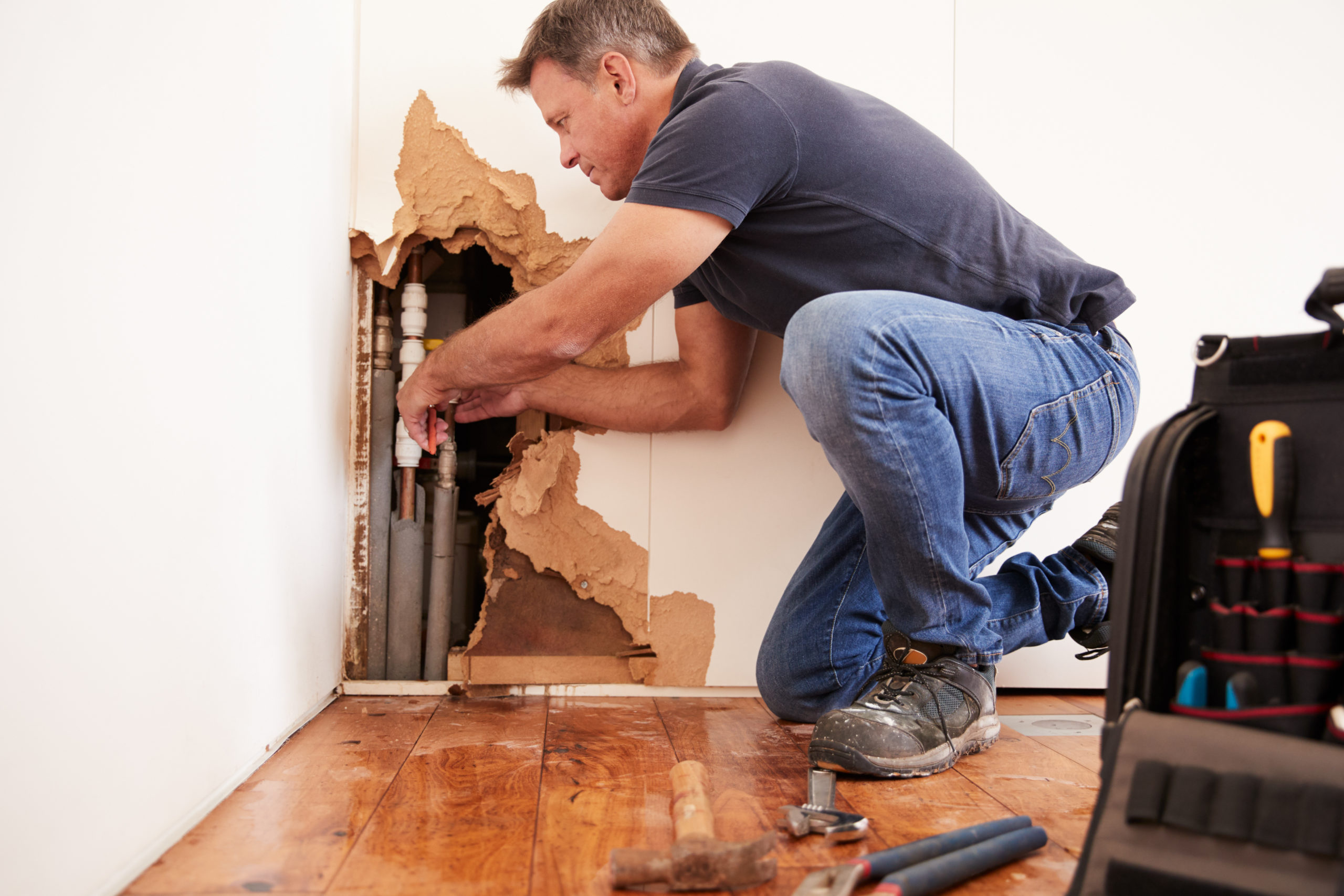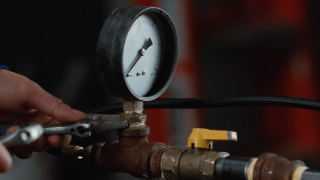Obtaining Acquainted with Home Plumbing Basics: A Beginner's Handbook
Obtaining Acquainted with Home Plumbing Basics: A Beginner's Handbook
Blog Article
The writer is making a few great annotation on the subject of Plumbing Basics Every Homeowner Should Know overall in this content beneath.

Plumbing is a necessary facet of any home, in charge of providing tidy water for drinking, cooking, and showering, as well as removing wastewater safely. Recognizing the basics of home plumbing is important for each homeowner to make sure appropriate maintenance, troubleshooting, and, if required, fixings. In this novice's guide, we'll cover the fundamental principles of home plumbing to aid you end up being a lot more acquainted with exactly how it works.
Water Heater
The water heating unit is responsible for home heating water for domestic use, including bathing, food preparation, and cleansing. Common kinds of hot water heater consist of tank-type hot water heater, tankless (on-demand) water heaters, and heatpump water heaters. The water heater is linked to the water system system and supplies warm water to plumbing components as required.
Water drainage System
The water drainage system gets rid of wastewater from your home and lugs it away to a sewage treatment facility or septic system. It contains a network of pipelines, installations, and components that move wastewater from plumbing components to the major drain line or sewage-disposal tank. Appropriate drainage is essential to prevent clogs, back-ups, and sewer leakages.
Ventilation System
The air flow system assists preserve proper air pressure and prevent sewage system gases from entering your home. Air vent pipes, also called vent stacks, expand from plumbing components to the roofing system, allowing sewage system gases to run away safely outside. Air flow pipes additionally enable air to enter the water drainage system, promoting smooth wastewater flow and preventing suction or vacuum cleaner impacts.
Supply Of Water System
The water supply system brings clean water right into your home from a local water source or an exclusive well. It includes a main water line that attaches to your home's plumbing system, typically situated underground. A water meter determines the quantity of water consumed, while a shut-off shutoff allows you to manage the flow of water right into your home.
Plumbing Fixtures
Plumbing fixtures are tools that provide water to different parts of your home and include sinks, taps, toilets, showers, tubs, and appliances such as dishwashing machines and cleaning devices. Each component is connected to the water system through pipes and fittings and may have its shut-off valve for upkeep or emergency situations.
Typical Plumbing Devices
Having the right tools handy is crucial for executing basic plumbing repair work and upkeep tasks. Common plumbing devices include adjustable wrenches, pipe wrenches, pliers, pipe cutters, hacksaws, plungers, augers (or drainpipe snakes), and Teflon tape. Having these tools conveniently available can help you take on minor plumbing issues successfully.
Standard Plumbing Repairs
While some plumbing repair work might call for professional support, several usual issues can be attended to with basic DIY strategies. Understanding how to repair a leaking tap, unblock a drainpipe, change a commode flapper, or fix a trickling showerhead can conserve you money and time on plumbing repairs.
Conclusion
Comprehending the fundamentals of home plumbing is crucial for every single homeowner to keep a safe, functional, and efficient plumbing system. By familiarizing on your own with the water supply system, plumbing fixtures, water drainage system, air flow system, usual plumbing devices, and fundamental repair work, you can confidently deal with minor plumbing issues and ensure your home's plumbing system runs efficiently.
Plumbing for Beginners: A Comprehensive Guide
If you’re a beginner when it comes to plumbing, don’t worry; you’re not alone. Plumbing may seem intimidating, but with the right knowledge and a little practice, you can handle many common plumbing issues on your own. In this comprehensive guide, we will demystify the world of plumbing for beginners, providing you with the basic knowledge and skills needed to tackle common plumbing problems and even take on some DIY plumbing projects.
The Importance of Basic Plumbing Knowledge for Beginners:
First and foremost, basic plumbing knowledge gives you a solid foundation. It helps you grasp the key concepts and terminology that are essential in this field. By learning the basics, you’ll be able to build upon that knowledge and tackle more complex plumbing tasks in the future.
Having a basic understanding of plumbing also enables you to handle common issues that may arise in your home. Picture this: a leaky faucet or a clogged drain. With some basic plumbing knowledge, you’ll have the confidence to troubleshoot and fix these problems on your own. It saves you from unnecessary expenses and the hassle of waiting for a professional to arrive.
As a beginner, learning the basics of plumbing empowers you to take care of your own home. It gives you a sense of independence and self-reliance. You’ll no longer have to rely solely on professionals for every small issue that pops up. Instead, you can handle many tasks yourself, saving time and money in the process.
Remember, everyone starts as a beginner. Embrace the learning process and take small steps to expand your plumbing knowledge. There are plenty of online resources, tutorials, and even local workshops that talk about plumbing for beginners.
Essential Tools for Plumbing for Beginners
As you start your plumbing journey, having the right tools in your toolbox is crucial. Let’s explore some of the must-have tools:
Adjustable Wrench:
This versatile tool is a staple in any plumber’s toolbox. It allows you to tighten or loosen nuts and bolts of various sizes. Make sure to have an adjustable wrench with a comfortable grip.
Pipe Wrench:
A pipe wrench is specifically designed for gripping and turning pipes. It has serrated jaws that provide a strong grip, making it easier to loosen or tighten threaded pipes and fittings.
Plunger:
The plunger is a simple yet effective tool for clearing clogged drains and toilets. It creates suction when you push and pull, helping to dislodge blockages. Keep a good-quality plunger handy for those unexpected clogs.
Pipe Cutter:
When it comes to cutting pipes, a pipe cutter is your go-to tool. It creates clean, precise cuts without damaging the pipe. Look for a pipe cutter that can handle the pipe sizes you’re working with.
Hacksaw:
A hacksaw is useful for cutting through pipes, screws, and other materials. It’s a versatile tool that can handle different cutting tasks. Remember to use a blade suitable for cutting metal.
Tape Measure:
Accurate measurements are crucial in plumbing. A tape measure allows you to measure pipe lengths, distances, and dimensions accurately. Opt for a sturdy tape measure that extends a good length.
Pliers:
Pliers come in handy for various tasks, such as gripping, bending, and cutting. Slip-joint pliers with adjustable jaws are great for gripping pipes, nuts, and bolts.

I ran across that entry about when doing a search on the web. Sharing is nice. Helping others is fun. I value your readership.
Click Here Report this page